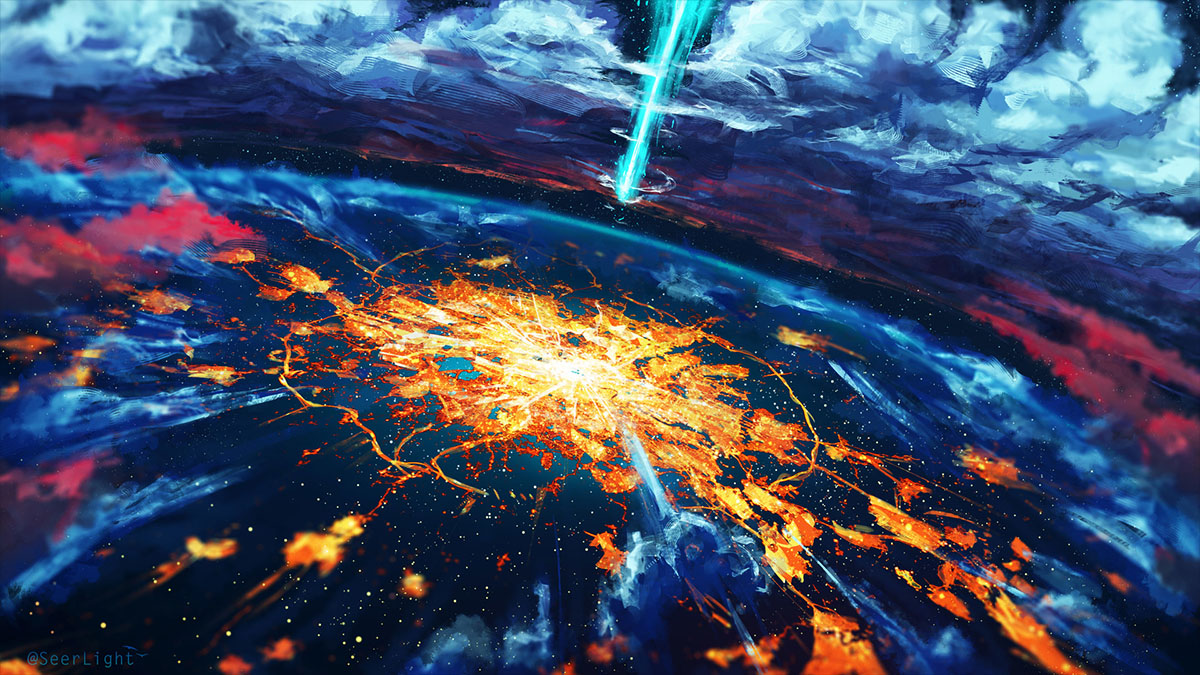nasa is getting ready to defend the planet by shooting at asteroids

As countless movies taught us, getting hit by a 60-million-ton rock screaming through the solar system at 65,000 kilometers per hour would be bad. Really bad. Hundreds of millions would die, and dozens of major cities across the would would be leveled by the subsequent earthquakes and yes, tsunamis, because the most likely impact zone are in the Atlantic, Indian, and Pacific oceans. Between the damage to our cities and infrastructure, and the clouds of debris sent high into the atmosphere, out world would take decades to fully recover. But all this assumes we’d just sit by and watch it happen, bracing for the catastrophe as best we can, something all those aforementioned movies tell us we don’t have to do.
Now, of course, simply launching enough nuclear warheads or sending crewed missions to an asteroid on a collision path with Earth won’t work. Radioactive rubble raining from the sky would be its own disaster, and our current craft would take way too long to deliver humans to an asteroid with no guarantee of safety or success. Not to worry though, scientists do have a few very promising ideas for deflecting and diverting potential impactors with kinetic rounds and robotic satellites capable of carefully pushing space rocks into much safer trajectories far from our orbit, and after a few decades of experiments and landings on real comets and small bodies in the asteroid belt, they’re ready to test an actual deflection.
The mission in question is called DART, or Double Asteroid Redirection Test, and its goal is to hit a small asteroid orbiting a larger one called 65803 Didymos while a companion mission flies by to capture the moment of impact. Don’t expect a dramatic aftermath though, the goal is to just slightly nudge the little moonlet to demonstrate that we can precisely adjust the trajectories of rocky cosmic objects exactly the way we think we could. Anything more would be risky since we don’t want to apply too much force or disrupt too big of an object and accidentally send it into a decaying orbit around Earth, and any anti-asteroid system’s top goal should be accuracy, not brute force, which we could always achieve with bigger, faster kinetic impactors.
That said, however, this technology couldn’t be a one-size-fits-all solution to preventing us from going the way of the dinosaurs. Impactors won’t work against so-called rubble piles, which are groups of asteroids orbiting around a common center of gravity as one entity until disturbed by larger objects. Trying to shoot at a rubble pile would be useless since a kinetic round would do little more than temporarily shuffle around a few rocks at best. An impactor would be just as useless against asteroids made of solid metal like iron, bouncing off the equivalent of a nearly impenetrable armor unless it’s traveling at a relativistic velocity, something we’re not sure is even possible given the known laws of physics.
But there are ways to deal with these objects as well. Massive nets made from light but strong materials that stretch over rubble piles can be attached to spacecraft that would capture and divert them with a steady application of thrust. Iron asteroids can be deflected with lasers or landers that can use anything from chemical thrusters to ion drives or pushed away using a powerful explosion on their surface, although that may be a less desirable approach because explosions aren’t as predictable or controlled as rockets and robots. With designs for machines able to handle rubble piles and metal asteroids on the drawing boards, and requiring very little in terms of new technology, don’t be surprised to see them built and tested next.
So, with the constant turmoil in the news you can at least rest easy about one thing. We won’t get wiped out by an asteroid impact anytime soon and when the threat does come, we’ll have the technology to protect ourselves. It may even be possible that in less than a century we’d have an orbiting fleet of robotic defenders ready to spring into action if a big enough rock sets its sights on Earth. Though before that happens, we’d need to figure out how to amend the Outer Space Treaty which forbids us to have orbital impactors since they can easily be used as weapons of mass destruction in a war, an unfortunate but very real possibility we’ll have to discuss as we try to advance as a species…





